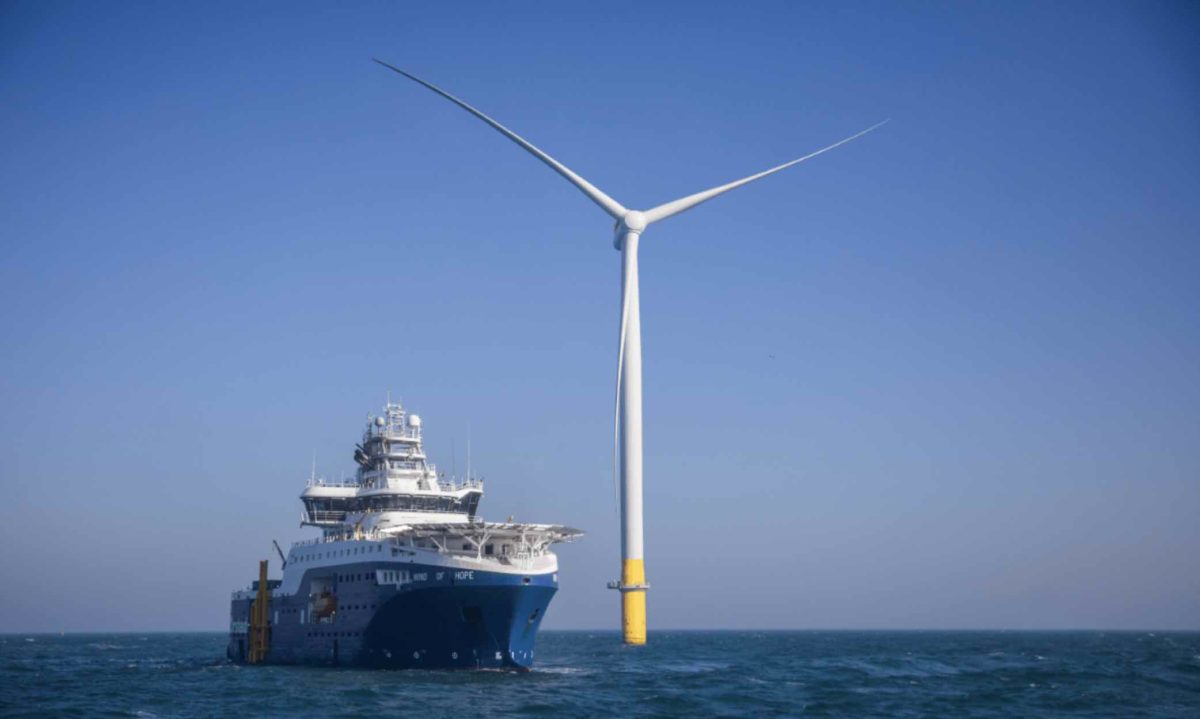Europe’s political response to Russia’s invasion of Ukraine in 2022 was to accelerate its electricity transition. There is now a focus on rapidly cutting gas demand – at the same time as phasing out coal. This means a massive scale-up in clean energy is on its way.
In 2022, wind and solar generated a record fifth of EU electricity (22%), for the first time overtaking fossil gas (20%), and remaining above coal power (16%).

However, the shift away from fossil fuels was put on hold by the twin crises in Europe’s electricity system in 2022.
A 1-in-500 year drought across Europe led to the lowest level of hydro generation since at least 2000, and there were widespread unexpected French nuclear outages just as German nuclear units were closing.
This created a large 185 TWh gap in generation, equal to 7% of Europe’s total electricity demand in 2022. Five-sixths of the gap was made up by more wind and solar generation and a fall in electricity demand. But the remaining sixth was met by increased fossil generation.
Since coal was less expensive than gas, coal accounted for the majority of the increase, rising 7% (+28 TWh) in 2022, compared to 2021. As a result, EU power sector emissions rose by 3.9% (+26 MtCO2) in 2022 compared to 2021.
Gas generation was almost unchanged (+0.8%), and because gas was already more expensive than coal in 2021, there was no further switching from gas into coal in 2022.
It could have been much worse: wind, solar and a fall in electricity demand prevented a much larger return to coal. In context, the rise was not substantial: coal power increased by just 1.5 percentage points to generate 16% of EU electricity in 2022, remaining below 2018 levels.
The 28 TWh rise in EU’s coal generation added only 0.3% to global coal generation.
2023 will be quite the opposite. Hydro generation will rebound, French nuclear units will return, wind and solar deployment will accelerate, and electricity demand will likely continue to fall over the coming months.
In 2023, Europe is set to witness a huge fall in fossil fuels – of coal power, yes, but especially gas power.
Europe’s coal power is now falling
Coal generation fell in all four of the final months of 2022. It dropped by 6% (-9.6 TWh) from September to December compared to the same months in 2021. This was primarily caused by falling electricity demand.
The 26 coal units brought back as emergency standby ran at just 18% average utilisation throughout Q4 2022; nine of the 26 units did not provide any generation. These standby additions added only 0.9% to EU coal generation in 2022.
Despite importing 22 million tonnes of extra coal throughout 2022, the EU only used a third of this and the surplus two-thirds remained unused. Perhaps most encouragingly, countries remain as committed to phasing out coal as they were before the crisis.
Electricity demand started to fall fast
EU electricity demand has begun to fall fast—dropping by 7.9% in Q4 2022 compared to the same period the previous year—close in scale to the 9.6% fall witnessed in Q2 2020 when Europe was in lockdown. This trend was observed in all EU countries. Prior to October, the fall was much less notable.
All three months of Q4 2022 were warmer than in 2021, but weather alone would not explain such large falls. It is likely that temporary cuts were driven largely by affordability concerns, alongside solidarity by many citizens to cut energy demand in a time of crisis and improvements in energy efficiency.
The transition will ultimately bring a major rise in demand through electrification. And with the step up in heat pumps, EVs and electrolysers in 2022, it is apparent that this change will happen quickly. We must not allow the current fall in demand to slow down the roll-out of clean energy.
Solar’s surge is only just starting
Solar generation rose by a record 39 TWh (+24%) in 2022, helping to avoid €10 billion in gas costs. This was due to record installations of 41 GW in 2022, 47% more than was added in 2021.
Twenty EU countries achieved their highest ever share of solar electricity. The Netherlands was the leader, producing 14% of its power from solar – overtaking coal generation for the first time.
Greece ran solely on renewables for five hours in October and is expected to reach its 2030 solar capacity target of 8 GW by the end of 2023, seven years early.
For the first time, wind and solar reached over a fifth (22%) of EU electricity in 2022.
Gas generation set for a record fall in 2023
Fossil generation rose 3% in 2022. Based on the latest industry projections, this will not be repeated in 2023. EDF forecasts many of its French nuclear plants will return in 2023 (and many are already back online already), Europe’s wind and solar industry groups show solar and wind generation should rise by about 20%, hydro stocks have nearly normalised and electricity demand will likely continue to fall in the short term.
The only brakes will be the fall in nuclear as Germany completes its phase-out. Based on these indications from the industry, Ember estimates that fossil generation could plummet by 20% in 2023, double the previous record from 2020.
Coal generation will fall, but gas generation will fall the fastest, since it is expected to remain more expensive than coal until at least 2025 based on current forward prices. The power sector is likely to be the fastest falling segment of gas demand during 2023, helping to bring calm to European gas markets as Europe adjusts to life without Russian gas.
is head of data insights at Ember. This article was republished here with permission. See the original version here.







